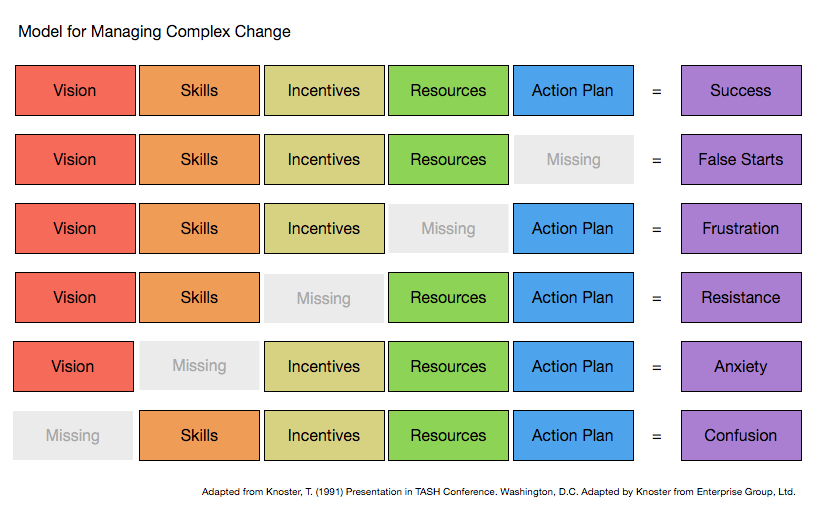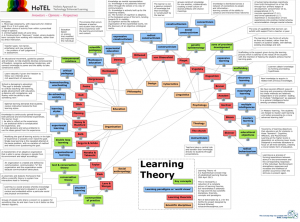As the school year begins, I’ve started to ponder what elements make for a successful change in education. There have been a plethora of turn-over of educational theories for decades. What philosophy are we currently following? In my career, I have seen portfolios as the answer. We’ve tested Basic Standards. The ideas shifted to testing every student with a common assessment. Common core is part of a discussion nation wide.
But, who do we listen to? Do we follow Bloom, Dewey, Gardner, Montessori or Piaget? This graphic captures the complexity of theories from the D2.2.1 for HoTEL EU project designed by Richard Millwood. Click the preview below to view the Learning Theory map.
So what makes a staff buy into a certain philosophy? What makes a team of teachers rally behind an idea that drives for every student to succeed? None of the theories above were devised to stop students from learning. But, what makes one philosophy win over another?
We are in an era of introducing revolutionary technology tools. iPads, Chromebooks, laptops or Bring Your Own are common vocabulary in many schools. But, what makes some rollouts so successful, and other schools selling back their devices? This came to light in this highly-shared article from The Atlantic: Why Some Schools Are Selling All Their iPads.
My thought is that so many elements need to be present for any educational shift, technology focused or otherwise, to be successful. In the past month, an image floated by in the waves of social media that I follow. I spent a few days with this post brewing in my mind before I found the image mentioned.
This image from T. Knoster’s Presentation in TASH Conference was adapted by Knoster from Enterprise Group, Ltg. You can read about the base image here: Leading and Managing Complex Change. I have struggled to find the origin of the colored version that I found. Below, though, is the link that I stumbled across this week.
The key elements to success are: Vision, Skills, Incentives, Resources, and an Action Plan.
I need to process the image below. What program implementations have I come across in my career? Which ones have been successful, and which ones were simply missing one element. Yet, with a single element missing, complex change may not be possible.
Think of an educational change that has been brought to your school. Was it successful? If not, what element was missing? What could leadership have done to help to make the change meaningful and positive for all in the learning community?
Are you entering a rollout of a new change? Specifically in regards to technology, what pieces do you need to put into place to fill all elements to fall into that row of success?

This version of the Knoster graphic was found at https://www.clarity-innovations.com/sites/default/files/knostermodel.png
